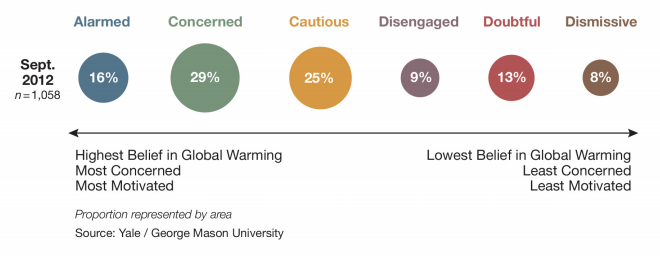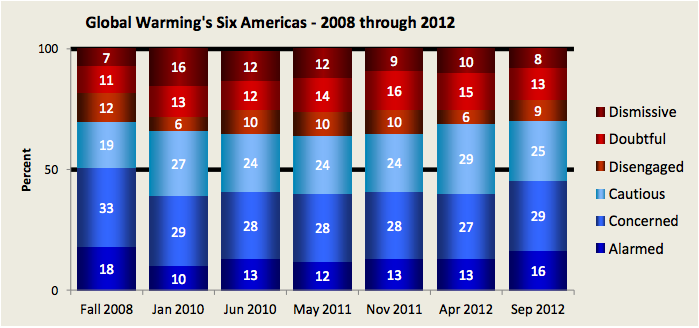Over the last year and a half here in Connecticut, we have certainly seen our fair share of extreme weather  events – Irene, the Halloween nor’easter of 2011, Sandy, Winter Storm NEMO (no relation to our NEMO), etc. These events have certainly had a big physical and financial impact on our state, but may have also had a broader emotional/political impact. There is a growing sense that events like these are shifting our national attitudes about climate change. But are they?
events – Irene, the Halloween nor’easter of 2011, Sandy, Winter Storm NEMO (no relation to our NEMO), etc. These events have certainly had a big physical and financial impact on our state, but may have also had a broader emotional/political impact. There is a growing sense that events like these are shifting our national attitudes about climate change. But are they?
I had the pleasure of attending a Climate Change workshop in Santa Monica, CA last week sponsored by the NOAA Sea Grant Climate Change Network. I was there to talk about our awesome Rain Garden App, but left with some interesting insight into what we as a nation think about climate change/global warming.
One of the speakers at the workshop presented the latest findings of “Global Warming’s Six Americas,” an ongoing study of American attitudes toward climate change conducted by Yale and George Mason University. The study has summarized American attitudes toward climate change into six categories and tracked the change in the number of people in those categories over time. The six categories or “six Americas” (along with their current percentage of the U.S. population) are:

- Alarmed (16%) – convinced climate change is happening, human caused, a serious and urgent threat, and personally taking action to address;
- Concerned (29%) – convinced climate change is happening, harmful, & human caused, but see it as a less immediate and personal threat;
- Cautious (25%) – believe climate change is real, not certain of the cause, and see it as a more distant threat;
- Disengaged (9%) – no strong beliefs about climate change, know little about it, and don’t see it as relevant;
- Doubtful (13%) – unsure whether occurring or not, but believe if it is occurring it is just natural and not human caused;
- Dismissive (8%) – convinced climate change is NOT happening and opposed to any action to address it.
As you can see from the chart above, 70% of Americans (alarmed + concerned + cautious) believe climate change is real, although their perceptions of the proximity of that threat vary. That is interesting, but at CLEAR we are, of course, much more interested in change over time. The Six America’s study has been tracking the percentage of people in each of the groups since 2008, see chart below.
 Source: Yale / George Mason University
Source: Yale / George Mason University
If you look just at 2008 and 2012, you will notice that while the number in each category is different, the number of Americans believing in climate change is the same (70%). Pretty boring, right? But, wait. Look at the years in between, there was a considerable drop in the number of “believers” and increase in the number of “doubters” in 2010 and 2011. Those numbers started to bounce back in 2012. Not quite as dramatic as watching the stock market change, but still a bouncy ride that is clearly impacted by the big weather events.
So what happened? The Six Americas report suggests the recession, the “climategate” email scandal, and decreases in media and political coverage led to the dip in “believers” in 2010 and 2011. It is likely then that improvements in the economy and a greater discussion of climate change related to high profile storm events like the Halloween nor’easter, Irene, etc. have pushed the needle the other way. It should be noted that this survey was last conducted in September 2012, before Superstorm Sandy or Winter Storm NEMO hit. Based on past trends, it is highly possible those events have moved the needle even further.
So what does it all mean? Your interpretation likely depends on where you fall among the Six Americas. However, it does appear that a strong majority now (or once again) believes climate change is real. Is it now safe to turn our attention to what we do about it?
If you love graphs and stats, the latest Six Americas report is full of them and can be viewed in its entirety here.